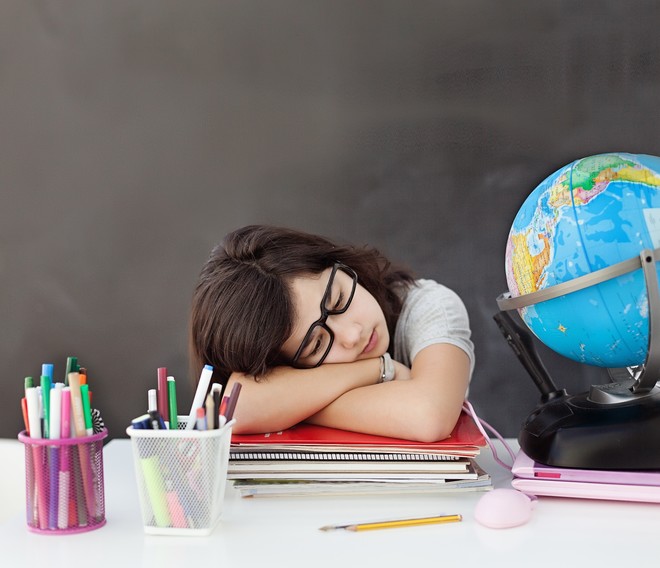Yes, children have a difficult transition from three months.idleness to intense study. This is especially true for first-graders who are under special stress from the new environment and workload. Helping the student balance his studies and rest can be the right regimen of the day. To organize it, you need to take into account the peculiarities of the children's nervous system: the brain works best in the morning and in the afternoon, after lunch its activity decreases and in the evening it falls. on items with the help of recommendations of Rospotrebnadzor. Photo: Getty Images
Photo: Getty Images
Sleep
Learning ability is directly affected bylack of sleep. If a schoolchild sleeps 2-2.5 hours less than he should, his performance level in class will decrease by a third. Primary school students should sleep 10-11 hours, children aged 11 to 14 - 9-10 hours, high school students - 8-9 hours. If a child is preparing for tests or exams, the usual duration of sleep should be increased by an hour. First-graders should leave the kindergarten routine and arrange a couple of hours of daytime sleep. But it is one thing to put a child to bed at nine o'clock in the evening, another to ensure that he falls asleep quickly, and does not toss and turn for an hour and a half to two hours. To avoid such problems, doctors advise going to bed at the same time, excluding noisy games, communication with gadgets and watching movies after seven o'clock in the evening, and also coming up with "rituals" - a shower, a bath, reading, a walk, and so on.
Food
Let's remember two words:regular and balanced. Schoolchildren should eat every 3.5-4 hours. That is, 4-5 times a day. It turns out, breakfast, lunch, afternoon snack, dinner. Well, and one more snack. - The diet should contain the required amount of proteins, fats, carbohydrates, dietary fiber, vitamins and minerals, - insists the supervisory agency. - In elementary grades, the average daily requirement is 2350 kilocalories. And of course, a meal is not a sandwich on a bench near the school, when mom irritably pushes you under the side, like, hurry up, we're late. The child should eat slowly, in a calm environment, at a set table. In general, with positive emotions. Photo: Getty Images
Photo: Getty Images
Motion
From school to after-school program, then straight to clubs.Here it is, the lifestyle of a modern schoolchild. And at eight o'clock in the evening, doing homework with a scandal. Parents, remember: you can't embrace the immensity. No child can calmly do homework if he hasn't rested before. In addition, as we read above, the evening is the time of minimal brain work. - Efficiency increases if schoolchildren start doing homework after 1.5 - 2 hours in the fresh air, - explains Rospotrebnadzor. - At the same time, it is advisable to use the first half of this time for games and sports of medium intensity, and spend the second half on quiet walks. Important! A child should walk and play active games for at least three hours at a younger age, and two and a half hours at an older age. Keep in mind that primary school students can spend no more than an hour and a half at the computer and lessons in total. At the same time, you can sit at the monitor without a break for no more than fifteen minutes. With age, these intervals increase. And for senior classes, it is 3.5 hours and thirty minutes respectively. Read more:









